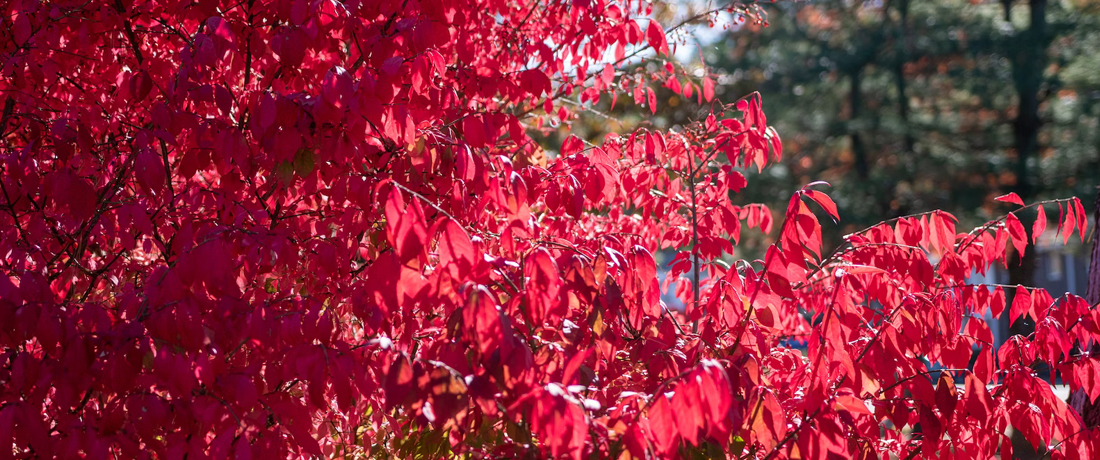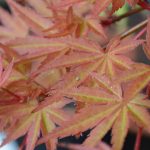
A group of plants often overlooked in Australian gardens are the smaller deciduous shrubs. These are many and varied, from beautiful and striking flowers of the Forsythia in spring, the radiant stems of Cornus alba sibirica in the winter, the gorgeous scent of Chimonanthus praecox in winter and the wow factor of the autumn foliage of Euonymus alatus, there are plenty of deciduous shrubs to tempt. Below are detailed descriptions of a few.
Euonymus alatus compactus (Burning Bush)
(Picture above) Growing to around 1.5m – 2m tall, this medium shrub has corky stems. It is also known as the Burning Bush and for good reason. The autumn foliage is a stunning, vibrant red. This slow growing shrub is not fussy about its location either, glowing red even in the shade. It can be hedged, or used as a feature. Frost tolerant and tolerant of hot, dry climates, this is a shrub to be seriously considered for its colour in autumn.
Forsythia x intermedia (Golden Bell)
Forsythia really packs a punch in early spring, when, on bare branches it produces hundreds of four-petaled flowers. Deeper yellow than most wattles, this stunning bush really does stand out against the grey and dreary skies. Growing to 3 meters, Forsythia will grow best in full sun or part shade.
Cornus alba sibirica and Cornus flaviramea (Red and Golden Twig)
Often used in English perennial borders for winter colour, the bare stems of these Cornus species provide welcome colour when everything else is dormant. These suckering shrubs will provide either red or yellow splashes, which look fantastic paired with the straw colour of the dormant grasses like Miscanthus, or evergreen shrubs like Viburnum davidii. They have white flowers in spring. Tolerant of most soils, they will grow best in full sun or part shade.
Chimonanthus praecox (Winter Sweet)
Also known as Winter Sweet, this medium shrub is a must have for scent in the winter. The small, waxy flowers appear over a long period in winter on bare branches. The scent is intoxicating, and beautiful. With its sandpapery green leaves, this shrub is best planted in full sun. Chimonanthus really does give you something to look forward to in those dreary winter months.
Berberis thunbergia (Japanese Barberry)
The beautiful feature of Berberis thunbergia varieties are the many and varied foliage colours. From bright, almost neon yellow of Berberis Golden Glow to the variegated pink and maroon leaves of Rosy Glow, there is a Berberis to suit any colour scheme. Their branches are spiky, but this will only encourage the small birds and discourage any would-be thieves! They can be pruned and shaped, used in hedging to add a splash of colour to a border. Once established, these small to medium shrubs are drought tolerant. Plant in full sun for best foliage colour.
Lagerstroemia dwarf varieties (Dwarf Crepe Myrtle)
For a blaze of colour in late summer to early autumn, you cannot go past the crepe myrtles. Flowering on new wood every year, pruning back in winter will produce more branches, each of which will grow a flower at its end. Flower colours can be white, red, mauve, purple and pink. Newer varieties have different foliage colour too, like the variety Enduring Summer, which has dark purple foliage and red flowers. Drought tolerant once established, these shrubs should be planted to extend the exuberance of summer into autumn!
 Important note about plant availability. Important note about plant availability.There are hundreds of factsheets on our website provided for your information. Not all plants will be available at all times throughout the year. To confirm availability please call (03) 8850 3030 and ask for the nursery. |


